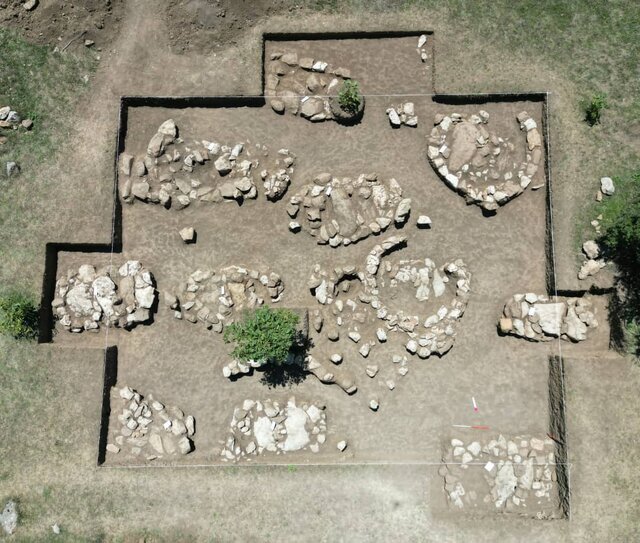TEHRAN – A team of archaeologists has resumed excavations at Izgam-Dasht, a site with an estimated 4,000-year history in the western part of Mazandaran Province in northern Iran.
So far, 17 ancient tombs have been discovered at the site, Mohammadreza Khalatbari, the head of the archaeological team, told ISNA on Monday.
“Two periods of excavation have already been carried out on the site. The first significant finds date back to 1396 (2017), when archaeologists uncovered 17 ancient tombs, confirming that the site dates back to the Bronze Age.”
Izgam Dasht is located in the Jannat Rudbar Plain in the Ramsar district of Mazandaran. The current excavations began with the permission of the Research Institute of Cultural Heritage and Tourism and are scheduled to last until September 21.
Izgam Dasht Cemetery is one of the historical cemeteries of Mazandaran. The first test excavations took place there in 1989 as part of an emergency research and identification program, the archaeologist explained.
He pointed out that this year’s research work is aimed at demarcating the boundaries of the site, conducting archaeophysical surveys, mapping the area and preparing the necessary documentation for the inscription of this valuable site on the National Heritage List.
Khalatbari, who is also a member of the faculty of the Archaeological Research Institute, noted that Izgam Dasht was first discovered in 1989 during an emergency survey because of its great historical value for different periods of civilization. Despite its importance, further excavations were postponed until 2017.
During the first excavation season in 2017, carbon-14 dating revealed that artifacts from the site date from the Middle Bronze Age (2000-1600 BC), the Iron Age (1500-500 BC), and historical and Islamic periods. The results of this research were published in a book titled Ramsar Throughout History.
The second season of excavations in 2023, supported by the Research Institute of Cultural Heritage and Tourism and Seyyed Shamseddin Hosseini, the representative of Tonekabon, Ramsar and Abbasabad in the Iranian Parliament, has led to the creation of another book: “The Amards: The First Indigenous Inhabitants of Western Mazandaran”, which is currently in preparation.
Khalatbari added that the team consists of experts from different fields, including specialists in different archaeological periods, archaeophysicists, physical anthropologists, architects, surveyors and designers.
These efforts are expected to lay the foundation for the establishment of the first site museum in western Mazandaran, he added.
Izgam Dasht is part of a larger network of archaeological sites in Mazandaran, a region known for its rich cultural history dating back to ancient times. The ongoing excavations aim not only to find out more about the region’s ancient inhabitants, but also to preserve and promote their cultural heritage through the establishment of a museum that will provide insights into the lives of the region’s early settlers.
AM

